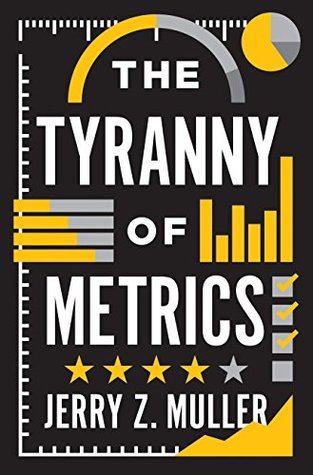More on this book
Community
Kindle Notes & Highlights
Decisions based on numbers were viewed as scientific, since numbers were thought to imply objectivity and accuracy.
The premise of managerialism is that the differences among organizations—
are less important than the similarities.
The demand for measured accountability and transparency waxes as trust wanes.
Numerical metrics also give the appearance
of transparency and objectivity.
The quest for numerical metrics of accountability is particularly attractive in cultures marked by low social trust.
Another motive for measuring performance is the fear of litigation as a result of the expansion of liability in American tort law.
The road to empowerment was paved with metrics.
Metrics are a tempting means of dealing with this “bounded rationality,” and engaging with matters beyond one’s comprehension.
The version of the theory prominent in the management literature calls attention to the gap between the purposes of institutions and the people who run them and are employed by them.
inspiring a curiosity about the world, and fostering creative thought?
Many of the problems of pay-for-performance schemes can be traced to an overly simple, indeed deeply distortive, conception of human motivation, one that assumes that people are motivated to work only by material rewards.
But a university is not a business.”
colleges and universities exemplify many of the characteristic flaws and unintended consequences of measured performance, as well as some of its advantages.
education is a positional good—
Finishing college is a signal of a somewhat higher level of each of these.
attain a college degree as an indicator of “human capital” becomes a deceptive unit of measurement for public policy analysis.
In recent decades, the percentage of the population with a college degree has gone up, while the rate of economic growth has declined.
statistics, students with lower scores are accepted on a “part-time” or “probationary” basis,
When individual faculty members, or whole departments, are judged by the number of publications, whether in the form of articles or books, the incentive is to produce more publications, rather than better ones.
because of the gap between the sticker price and the net price.
based on economic need or on academic merit.
training,
education,
that “the establishment of a system of national standards, coupled with assessment, would ensure that every student leaves compulsory school with a demonstrated ability to read, write, compute and perform at world-class levels in general school subjects.”
Under the NCLB act, enacted early in Bush’s presidency, states were to test every student in grades 3–8 each year in math, reading, and science.
year. It imposed an escalating series of penalties and sanctions for schools
which promoted greater school choice, the creation of charter schools, and higher qualifications for teachers—
(especially the rising percentage of Hispanic students, who tended to score less well than their Asian or white counterparts),
Under NCLB, scores on standardized tests are the numerical metric by which success and failure are judged.
The problem does not lie in the use of standardized tests,
Value-added testing, which measures the changes in student performance from year to year, has real utility.
it destroys the predictive validity of the tests themselves.
any evidence that the incentives change student or teacher behavior.”
The result: the gap in scores between whites and their black and Hispanic peers remained unchanged.
“All education favors the middle- and upper-class child, because to be middle- or upper-class is to have qualities that make one particularly educable.”


